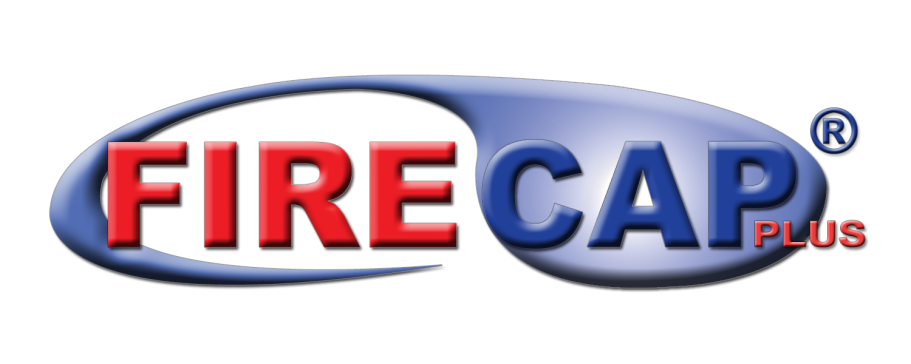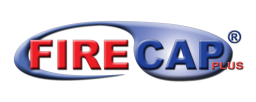Class "B" Fire
Application Techniques
When assessing a Class “B” fire situation you must first determine whether the fire involves a Non-Polar Solvent (Hydrocarbon) or a Polar Solvent. Application rate is as low as 1% for Non-Polar (Hydrocarbon) and 3% for Polar Solvents. Fire Cap Plus can be introduced into the water stream through any type of in-line eductor, on-board proportioning system, around-the-pump proportioning system, balanced pressure concentrate metering system, CAFS system, pre-mixed in apparatus booster tank, pre-mixed in portable tank, or other water supply source. Any means by which a 1% or 3% mixture ratio can be induced into the water source will provide tremendous extinguishing capabilities, faster cooling, and water savings.
Application Rates
Once you have identified the type of fuel involved you must calculate the square footage of the fuel surface area. After you have the square footage surface area calculated, simply multiply the square feet by the Class “B” application rate to calculate the amount of total solution flow rate (i.e. nozzle flow rate) required to extinguish the hazard. To determine the required Fire Cap Plus product amount, multiply the previously determined nozzle flow times the proportioner setting.
Example: You have determined the fuel involved is gasoline and it is covering an area 100 ft. long x 100 ft. wide. Use the following steps:
Determine the surface area:
Area = Length x Width
Area = 100 ft. x 100 ft. = 10,000 sq. ft.
Determine the required nozzle flow rate
Flow Rate = Area x Application Rate
Flow Rate = 10,000 sq. ft. x .05 gal/min/ft (Gasoline = .05 gal/min/ft)
= 500 GPM (use any combination of attack lines 1 @ 500 GPM, 2 @ 250 GPM or 4 @ 125 GPM)
Calculate the required Fire Cap Plus product
Product = Flow Rate x Proportioning Rate
Product = 500 GPM x 3% = 15 Gallons of Fire Cap Plus
By using the Fire Cap Plus application chart, you can calculate that you will require a 500 GPM flow rate, a 3% Fire Cap Plus product mixture, and approximately 15 gallons of Fire Cap Plus product to extinguish a 10,000 sq. ft. gasoline fire in approximately one (1) minute.
It’s very important to note that Fire Cap Plus extinguishes Class “B” fires by reacting with the heat, fuel, oxygen and free radical portions of the fire tetrahedron. The key to rapid, effective extinguishment is based on surface area coverage.
When attacking Class “B” type fires with Fire Cap Plus it is important to use an aggressive sweeping or circular motion with a 30 to 50 degree fog type pattern across the surface of the Class “B” fire for extinguishment. This technique allows the product to be spread over a greater surface area for faster knockdown and extinguishment of the burning fuel, which will reduce the intense heat, and smoke conditions faster, save water but, most importantly provide added safety to firefighters. Some Class “B” fires will require setting up your equipment for “Foam Application” to form a Foam Blanket to smother the fire utilizing foam aerator-type equipment. The more air induced into the Fire Cap Plus product, the thicker the Foam Blanket.
DO NOT APPLY Fire Cap Plus directly into the burning fuel using a straight stream or plunging technique. This type of application will result in a longer extinguishment time due to the fresh fuel (vapors) being exposed to the fire.
After you have extinguished the fire and neutralization is needed, you can then plunge the Fire Cap Plus into the fuel to agitate it with the water to accomplish neutralization or non-flammability. The more water you add to the fuel, utilizing the proper Fire Cap Plus ratio, the finer the fuel is locked-up. Once the fuel is locked-up (neutralized), the safer the conditions for firefighters.
Note: It is not recommended to try to neutralize a large depth-type spill because it will require a large amount of water, thus making it harder to contain the situation in its original area. For this type of emergency, it is recommended you keep a foam-type cap over the surface until it can be safely recovered.
Note: It is always important to know exactly what type of fuel hazard you are dealing with. Class “B” type fire burn hazards are unpredictable and the procedures for fighting this type of fire with Fire Cap Plus are similar to foam fire-fighting procedures. FIRE SUPPRESSION PRODUCTS strongly recommends that all Department Standard Operating Guidelines (SOG) and safety standards be strictly followed when using Fire Cap Plus.
Note: It is never recommended that anyone enter the flammable liquid. Always evaluate the threat of fire to personnel, equipment, or property when initiating the use of Fire Cap Plus. Your safety is top priority.
Note: Fire Cap Plus extinguishes all sides of the fire tetrahedron even when utilized as Foam, resulting in faster extinguishment than traditional foams.
We need your consent to load the translations
We use a third-party service to translate the website content that may collect data about your activity. Please review the details in the privacy policy and accept the service to view the translations.

